Fortaleza de San Carlos de la Cabaña- Visiting Havana’s Mighty Fortress
Purchases made through links earn us a small commission, at no extra cost to you.
As we walked around during our 3 days in Havana, I couldn’t help but look across the channel and wonder- “What is that giant stone wall?” It seemed like it went on forever, spanning almost the entire hill.
The stone structure that had piqued my curiosity was actually a colossal colonial fortress, one of the largest built in the Americas. Fortaleza de San Carlos de la Cabaña, or simply La Cabaña, was much more than just a wall- it was a key piece to Havana’s complex fortification system, guarding the narrow entrance to the Bay of Havana.
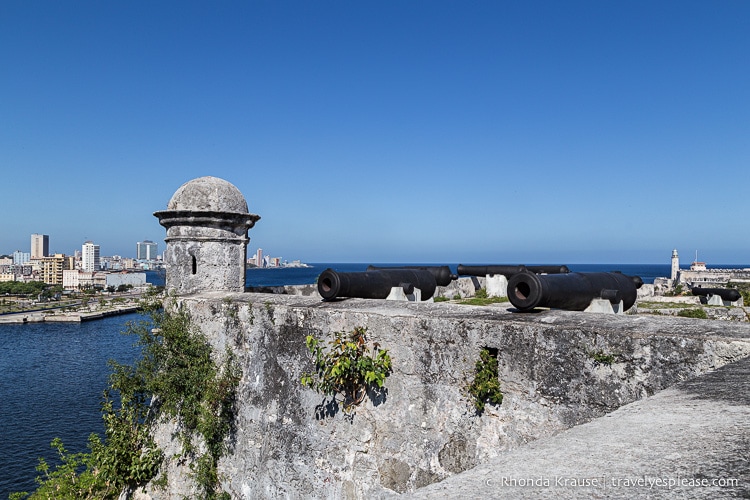
Fortaleza de San Carlos de la Cabaña- History and Construction
Havana’s fortification system was built to deter pirates and protect Havana from enemies who sought to control the city for its strategic position in the Caribbean. As this favourable location was highly prized by enemies in the 1700s, there was a need for a system of defence, especially at the Bay of Havana. This led to several fortresses being built, making Havana the most fortified city in any Spanish colony.
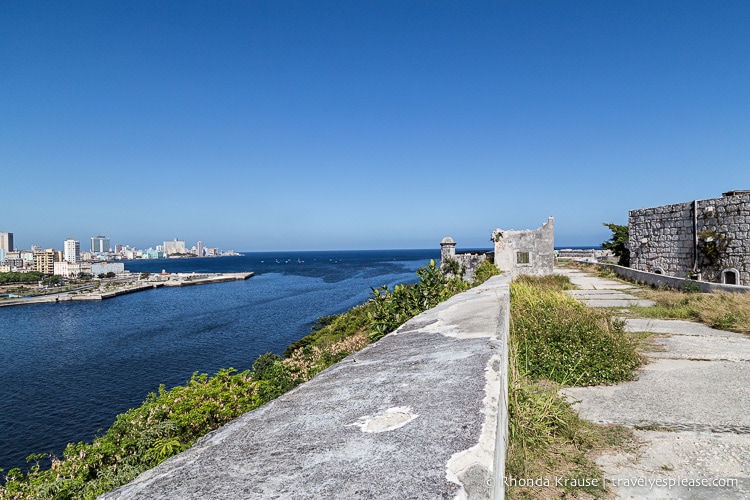
Fortaleza de San Carlos de la Cabaña was constructed after weaknesses in Havana’s defences, specifically at Castillo del Morro, allowed the British to capture Havana in 1762. This breach and the resulting 11 month foreign occupation convinced Spain that more effective fortifications were needed on the ridge at the entrance to the bay. Once the Spaniards regained the city, they set right to work fortifying that strategically important hill across the channel.

Under orders from Spanish King Carlos III, construction on La Cabaña started in November 1763. About 4,000 men, including Mexican and Indian prisoners, laboured on the project.
Fortaleza de San Carlos de la Cabaña was built in the shape of a crown covering 10 hectares and sprawling over 700 metres along the canal leading into the Bay of Havana. The fortress was reinforced by a deep dry moat on the east and high wall panels facing the channel.
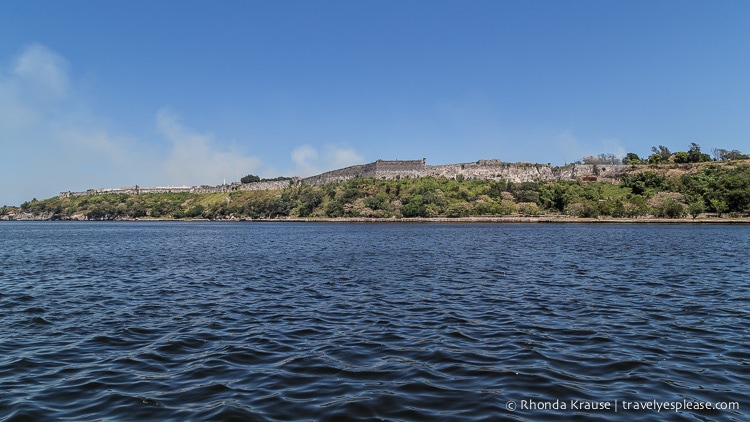
By the time La Cabaña was completed in 1774, it had cost Spain 14 million pesos. When King Carlos was informed of the expense, legend holds that he asked for a spyglass and claimed, “Such an expensive construction should be visible from Madrid.”
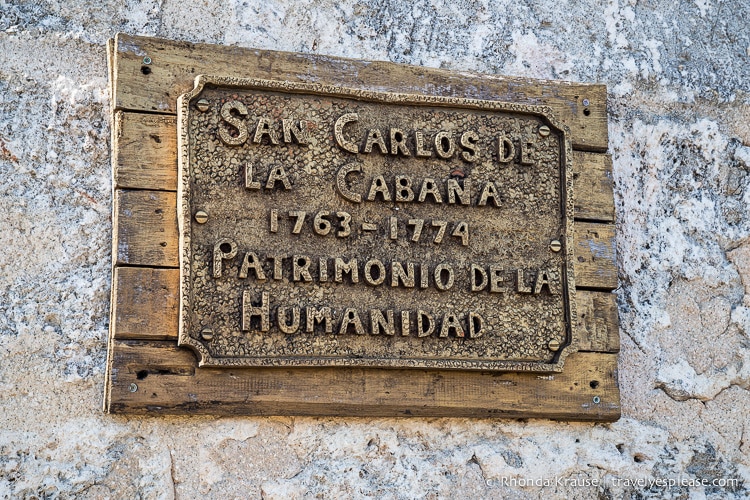
La Cabaña was so imposing and impenetrable that no invader ever attacked it. The fortress may not have seen any battles, but it was used as a military prison by dictators Batista and Machado. Soon after the revolution, Che Guevara set up his headquarters here.
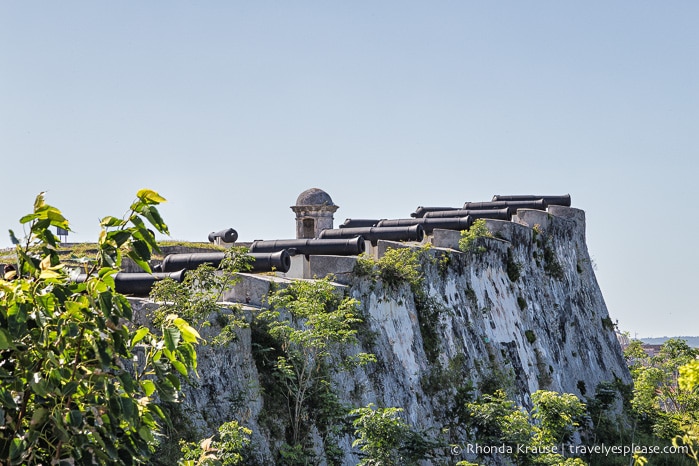
Fortaleza de San Carlos de la Cabaña was later restored and included in the system of fortresses that, along with Old Havana, were declared by UNESCO as a World Heritage Site in 1982. La Cabaña now operates as a historic site and museum.
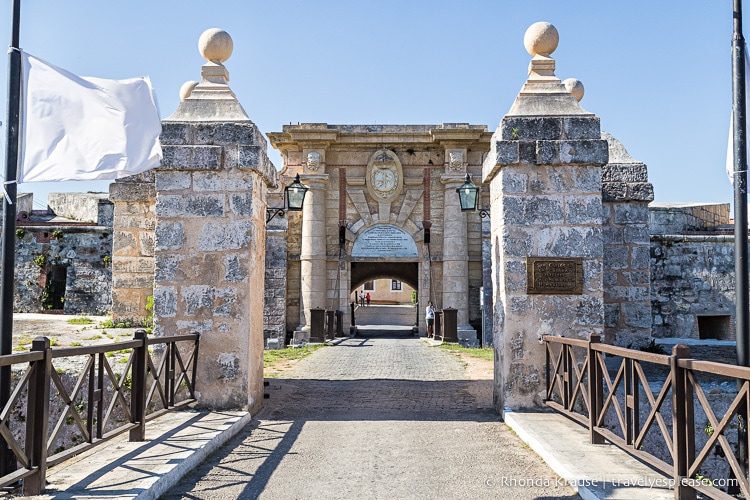
Visiting Fortaleza de San Carlos de la Cabaña
Fortaleza San Carlos de la Cabaña offers visitors a variety of experiences from educational museums to a nightly canon firing ceremony. Perhaps the best reason to visit is the wonderful views of Havana and its bay that can be enjoyed as you walk along the fortress walls.
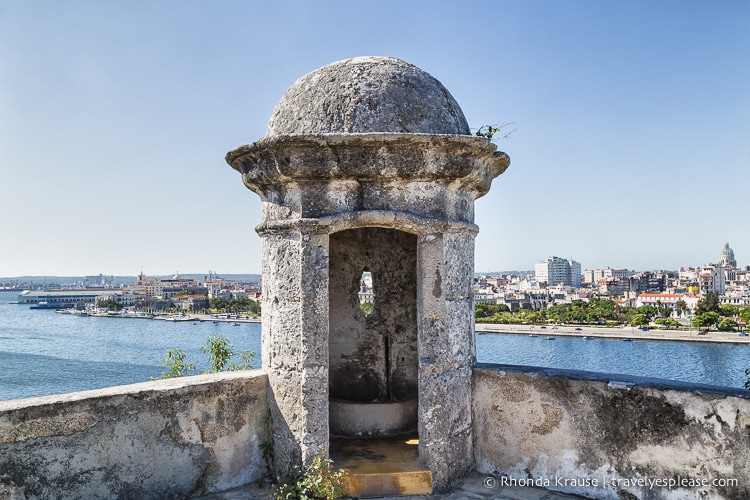
Admittedly, most of our time at La Cabaña was spent looking out over the channel and exploring the fort’s exterior areas. I loved seeing the rows of old canons and piles of canon balls that dot the property. It was easy to see how enemies and pirates would have been intimidated with so many canons ready to fire at their boats!
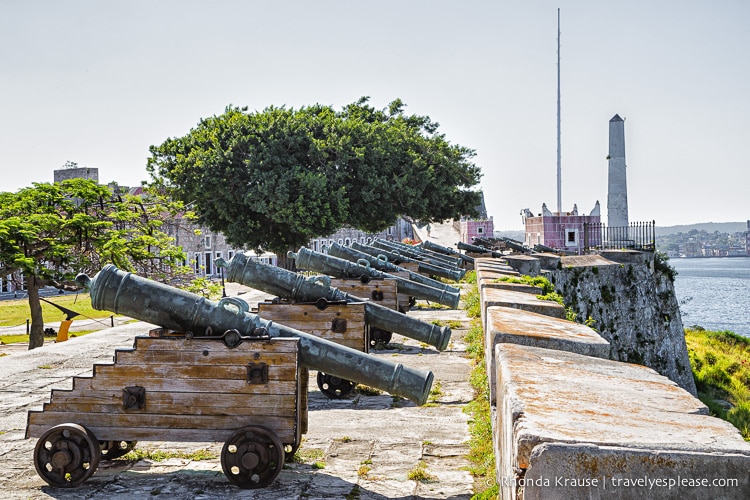
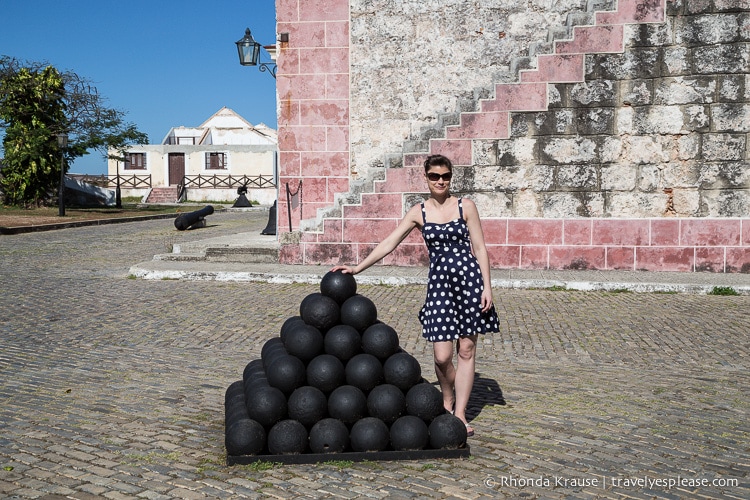
We saw many more weapons on display in La Cabaña’s military museum (Museo de Fortificaciones y Armas), which hosts one the most important ancient weapon collections in Cuba. My favourite was the giant catapult!
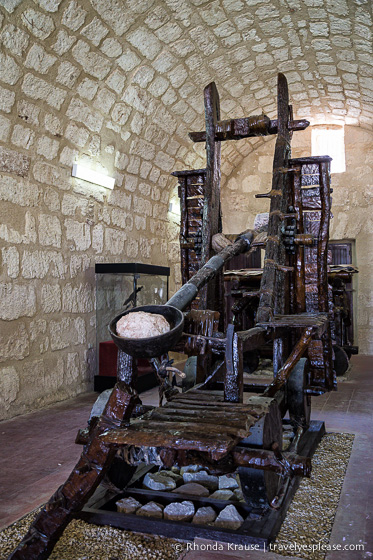
Another museum we visited at the fortress was the Museo de Comandancia del Che. Here there’s a permanent exhibition of Che Guevara’s personal objects (glasses, camera, weapons etc.) along with some pictures that tell the story of his life. Che’s original office has been left intact and can also be visited.
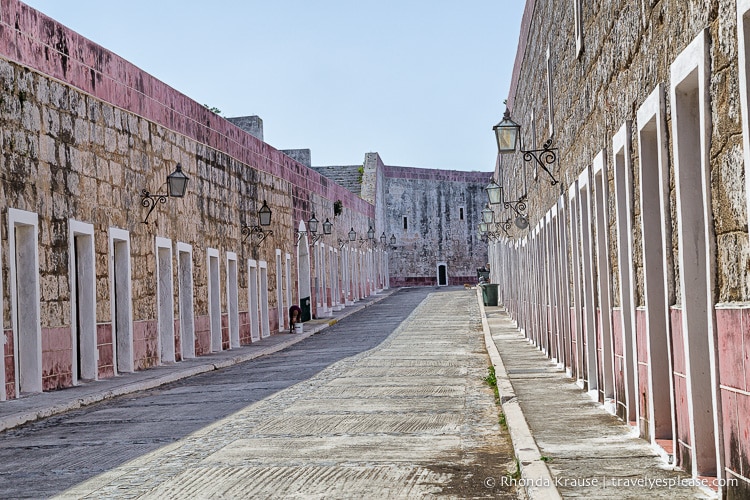
The Cañonazo
The highlight of our visit was the Cañonazo ceremony. Every night starting at 8:30, a group of soldiers dressed in 18th century uniforms begin a theatrical ceremony re-enacting the historical firing of the cannon. This told citizens the city gates were closed and access to the bay had been blocked by a chain.
After the ceremonial marching and drumming, the canon shot is fired at 9:00 pm sharp. Be warned, it is very loud! I tried to catch a picture of the canon firing, but the shot was so intense that my eyes instinctively closed as the boom reverberated through my chest. I could not hear much at all for about 10 minutes afterwards!
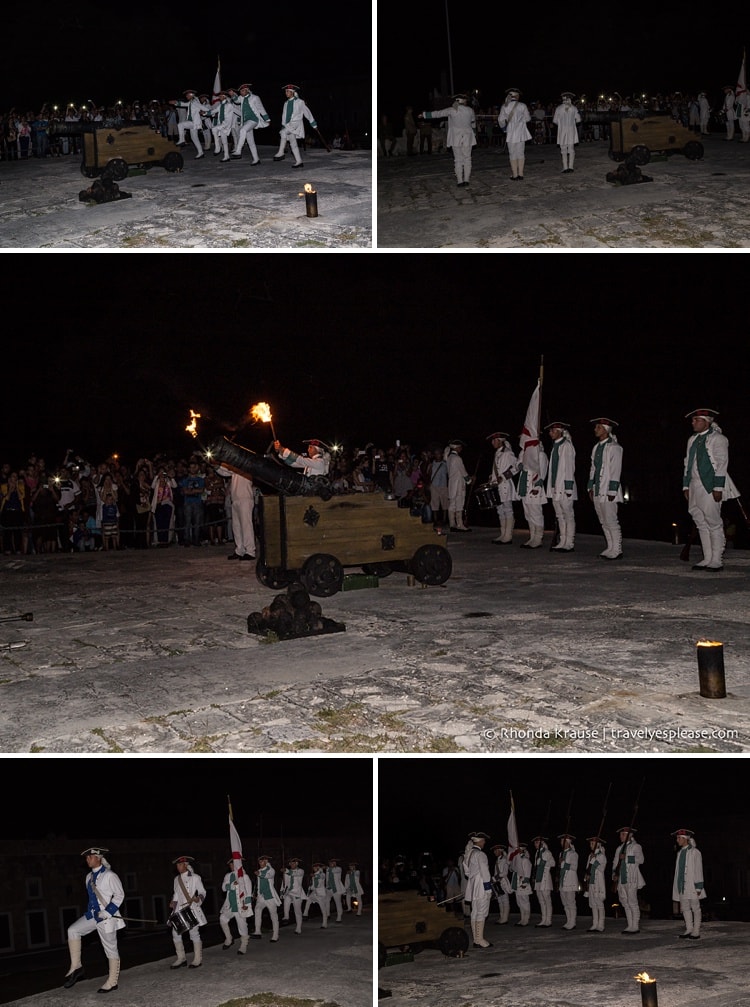
Final Thoughts About Our Visit to La Cabaña
We enjoyed our visit to La Cabaña even though we wouldn’t necessarily consider it a must-see attraction in Havana. The fact that it’s more removed from Havana’s main tourist district might be seen as an inconvenience by some, but for us it was a welcome break from the exhausting “Havana hustle“.
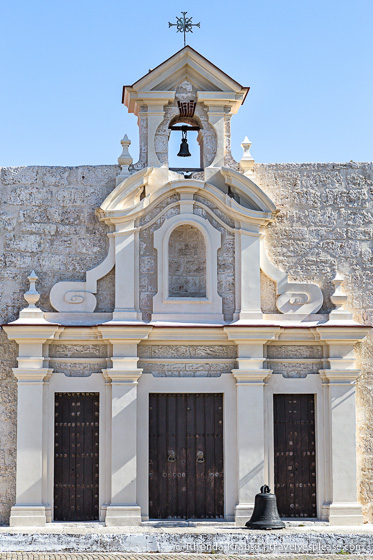
The most memorable parts of our visit were the views of the city and the Cañonazo ceremony because it was a unique experience. I’ll never forget that powerful, loud bang!

Tips for Visiting Fortaleza San Carlos de la Cabaña
- An admission fee is charged to visit La Cabaña. The fortress is open daily, but there isn’t an official website to confirm current hours. When I visited it was 10:00 am- 10:00 pm, but there are various times cited on the internet so it’s best to ask your hotel staff.
- The fortress is easily reached by cab. It’s a bit of a dead end with not much else around, so you may want to have your cab wait for you.
- The Cañonazo ceremony can be done independently or as part of an organized excursion. Shuttle bus transportation to the ceremony was offered by our hotel.
Information was updated December 2024, but can change without notice. Please confirm directly with the venue.
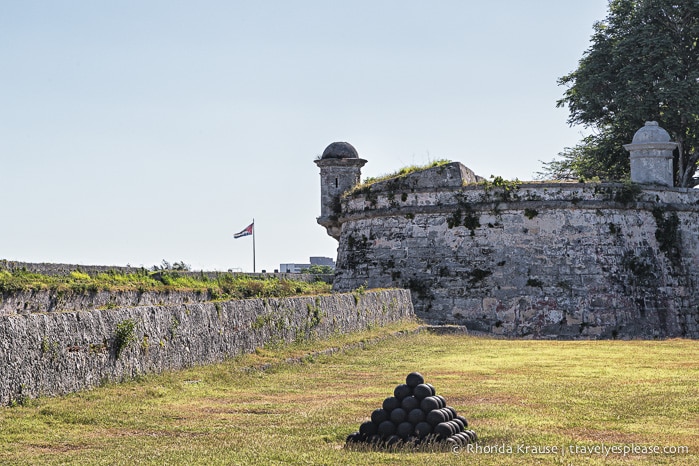
More Cuba Destinations and Travel Guides
- What to Expect on Your First Trip to Cuba
- A Night Out at the Tropicana Havana
- Trinidad- Colourful Charm in Cuba
- Parque Marti- The Historic Heart of Cienfuegos
